Lithops Care: Mastering the Art of Growing Living Stones
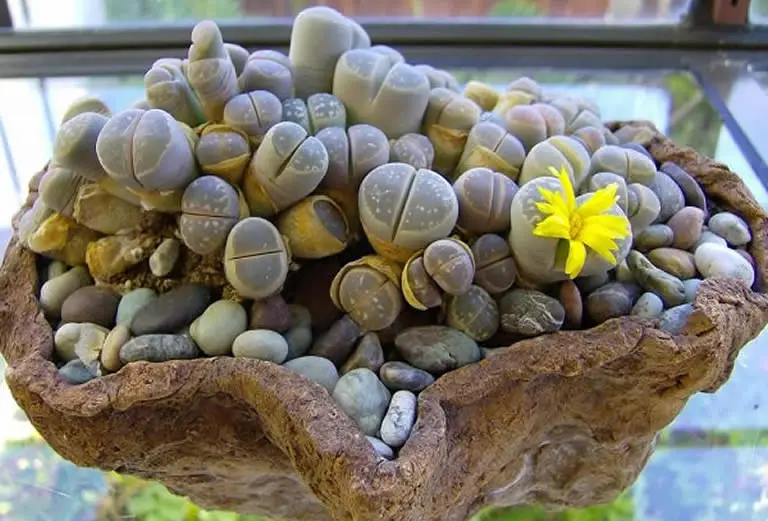
Lithops, often dubbed “living stones,” are captivating succulents that mimic the appearance of pebbles. Their unique camouflage and minimalistic beauty have made them a favorite among succulent enthusiasts. This guide will walk you through the essentials of Lithops care, ensuring these intriguing plants thrive in your collection.
Table of Contents
- Plant Background: Lithops
- Light Requirements for Living Stones
- Watering Needs of Lithops
- Soil and Potting Needs
- Fertilizer: When & How To Feed Your Lithops
- Pruning and Maintenance
- Best Spot in the Home for Living Stones
- Outdoor Care
- Common Problems and Fixes for Lithops
- Popular Lithops Varieties
- Popular Lithops Varieties
- Final Thoughts
Plant Background: Lithops
Native to the arid regions of southern Africa, Lithops have evolved to resemble the stones and pebbles of their environment, a clever adaptation to avoid predation.
Each plant consists of a pair of thick, fused leaves with a slit at the center from which flowers emerge.
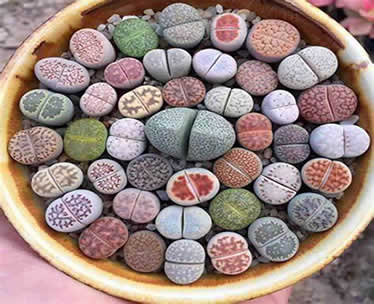
Their slow growth and seasonal patterns make them both fascinating and rewarding to cultivate.
Light Requirements for Living Stones
Lithops require ample sunlight to maintain their compact form and vibrant patterns.
Place them in a location where they receive at least 4-5 hours of direct sunlight daily.
In regions with intense sun, provide some afternoon shade to prevent scorching.
Insufficient light can lead to elongated growth and faded colors.
Watering Needs of Lithops
Watering Lithops correctly is crucial. During their active growth period (spring and autumn), water sparingly, allowing the soil to dry out completely between waterings.
In summer and winter, reduce watering significantly, as the plants enter dormancy.
Overwatering can lead to root rot and is a common cause of plant failure.
Soil and Potting Needs
A well-draining soil mix is essential for Lithops.
Use a cactus or succulent mix, or create your own by combining potting soil with sand and perlite.
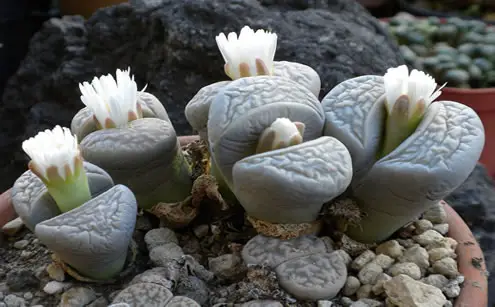
Ensure pots have drainage holes to prevent water accumulation.
Terracotta pots, like these, are ideal as they allow for better moisture evaporation.
Fertilizer: When & How To Feed Your Lithops
Lithops have minimal fertilizer needs.
During their growing season, a diluted, balanced fertilizer with an NPK ratio of 2-7-7 like this one, can be applied once.
Avoid fertilizing during dormancy, as the plants are not actively absorbing nutrients.
Pruning and Maintenance
Lithops require little to no pruning.
After flowering, the old leaf pair will shrivel as a new pair emerges.
Allow this process to occur naturally, refraining from removing the old leaves prematurely.
Regularly inspect for pests and remove any debris to maintain plant health.
You can remove leaves and use them to grow new plants as outlined in our article How to Propagate Lithops (Lithops spp.): A No-Nonsense Guide to Multiplying Living Stones.
Best Spot in the Home for Living Stones
Place Lithops on a sunny windowsill or in a location with bright, indirect light.
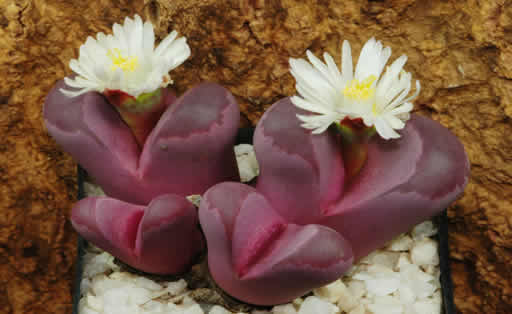
Ensure they are not exposed to drafts or sudden temperature changes.
Their compact size makes them perfect for small spaces and indoor rock gardens.
Outdoor Care
In suitable climates, Lithops can be grown outdoors in rock gardens or containers.
Ensure they are protected from excessive rainfall and frost.
Provide ample sunlight and well-draining soil.
In colder regions, it’s best to keep them indoors during winter months.
Common Problems and Fixes for Lithops
-
Overwatering: Leads to root rot. Ensure soil dries out completely between waterings.
-
Underwatering: While drought-tolerant, prolonged dryness can cause shriveling. Monitor soil moisture.
-
Insufficient Light: Results in elongated growth. Move to a brighter location.
-
Pests: Mealybugs and aphids can infest plants. Treat with insecticidal soap or neem oil.
Popular Lithops Varieties
Lithops come in a myriad of patterns and colors. Here are some popular varieties:
-
Lithops aucampiae: Known for its reddish-brown hues and intricate patterns.
-
Lithops lesliei: Features olive-green tones with speckled tops.
-
Lithops karasmontana: Displays grayish bodies with reddish markings.
-
Lithops salicola: Recognized for its gray-green color and tolerance to overwatering.
-
Lithops hookeri: Exhibits a range of colors from pink to brown with distinct patterns.
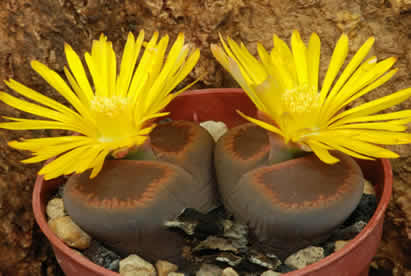
Lithops aucampiae -
Lithops dorotheae: Noted for its yellowish body and dark green windowed tops.
-
Lithops julii: Pale gray with intricate, dark marbling.
-
Lithops optica ‘Rubra’: A striking variety with deep purple hues.
-
Lithops fulviceps: Features orange-brown tones with speckled patterns.
-
Lithops marmorata: Displays a marbled appearance with white and green colors.
Popular Lithops Varieties
Lithops come in an impressive array of colors and patterns, each adapted to blend in with different types of stone in their native habitat. While their care and propagation methods are consistent, the visual variety keeps collectors hooked. Here are some of the most popular types:
-
Lithops aucampiae – Reddish-brown or orange tones with speckled patterns; one of the easiest to grow.
-
Lithops lesliei – Pale green to olive rosettes with detailed marbling; very common and adaptable.
-
Lithops karasmontana – Gray with red or rust-colored markings; often forms clumps over time.
-
Lithops salicola – Smooth and pale, sometimes with greenish tones; tolerant of slight overwatering.
-
Lithops hookeri – Wide variety of forms with pinkish, reddish, or brown hues and bold markings.
-
Lithops dorotheae – Yellow-green with dark windowed tops; produces vibrant yellow blooms.
-
Lithops julii – Light gray to beige bodies with intricate, ink-like veining.
-
Lithops optica ‘Rubra’ – Stunning deep purple to magenta coloration; a favorite among collectors.
-
Lithops fulviceps – Orange to rust-toned with deep fissures and bold speckling.
-
Lithops marmorata – Milky green with marbled tops that look like natural stone carvings.
These varieties all follow the same propagation practices and can be grown side by side in a well-draining mix to create a beautiful, living stone mosaic.
Final Thoughts
Caring for Lithops is a rewarding experience that brings a touch of the desert into your home.
With their unique appearance and minimal care requirements, they make an excellent addition to any succulent collection.
By understanding their needs and mimicking their natural habitat, you can enjoy these living stones for years to come.
Thanks for reading! I'm Michael — houseplant fanatic and your Pinterest plant guide.
Follow me on Pinterest for fresh updates 🌿



